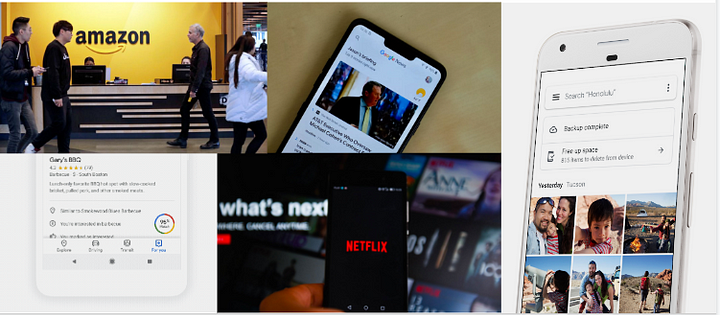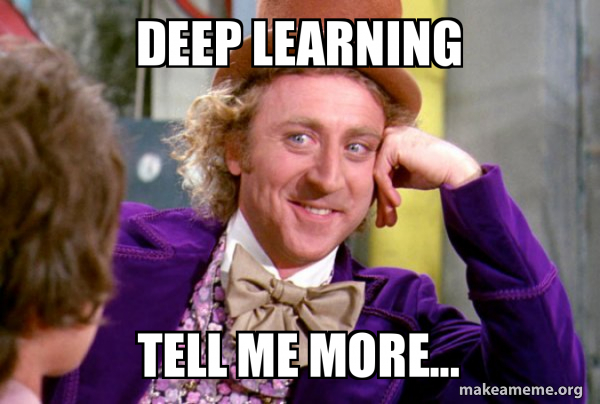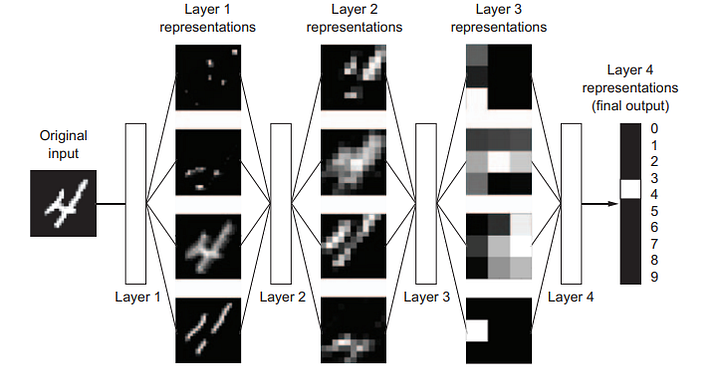What is AI, ML and DL
What you will learn?
- What is Artificial Intelligence?
- What is Machine Learning?
- What is Deep Learning?
How they are related to each other?

AI, ML and DL are related to each other. AI is a superset of ML and DL. What we do in the field of ML and DL all comes under AI. To better understand all of them, Let’s dive in…
What is AI?
- An effort to automate intellectual tasks performed by humans
- AI is any technology that enables a system to demonstrate human-like intelligence
- Artificial Intelligence and Natural Intelligence are very similar.
Where is AI Used?
Nowadays, AI is used mostly in all industries. You are using AI in day to day of your life from buying products on Amazon or reading articles on Google News or Watching Netflix or using Google Photos to save your memories. We are surrounded by AI and its uses to make our lives better.

Google Products Using Machine Learning

- Google Photos: Searching your photos through tags, organising the similar photos together by recognising the face of the person or improving the quality of images and many more…
- Google Translate: For translating from one language to another.
- Youtube: Giving recommendations on based one videos you watched.
- Google Lens: For searching the information differently, it uses OCR to understand from images or read the documents.
- Google Assistant: AI Conversational agent, which can help you do a lot thing by just invoking it with “Ok, Google or Hey Google”. It is the best example of Speech recognition.
- Gmail: Gmail, has features like Smart Reply can help to reduce your lot of work, it can also recommend you the next coming words in your sentence which you can use.
What is Symbolic AI(or Classical AI)?
It is a branch of AI research that concerns itself with attempting to explicitly represent human knowledge in facts and rules. On the given set of heavy complex rules and facts, we can make a machine which can perform like human intelligence.
Ex: Early Chess Games, were hardcoded in our PCs and can play with us because they were hardcoded by some set of rules and facts.
Can It solve Image Classification, Speech Recognition tasks?

Here comes, Machine Learning

So what exactly is ML?
The art and science of :
- Giving Computers the ability to learn
- To make decisions from data
- Without being explicitly programmed
Classical Learning Vs Machine Learning

In traditional programming or classical programming, we were giving the set of rules and data to it and based on that it gives us the relevant answers. We hardcode the software do a specific set of task. But, Machine Learning changes the way we are working until now. It takes some data and answers and based on it makes some rules and do a specific task which it is made for.
Why Machine Learning?
- Massive Global Demand
- Data is Power!
- It’s fun as Hell!
High-Level Overview to Perform Machine Learning
We need,
- Input Data Points
- Examples of the expected output
- A way to measure whether the algorithm is doing “Good Job or Not”.
Example,

- Inputs are the coordinates of our points
- The expected output is the colours of the points
- A way to measure whether our algorithm is doing a good job could be, for instance, the percentage of points that are being correctly classified.
3 Types of ML
- Supervised Learning: Using Labeled Data
- Unsupervised Learning: Using Unlabeled Data
- Reinforcement Learning: Software agents interact with an environment
What is Deep Learning?

Intro
- It is a subfield of ML
- It is a mathematical framework for learning representations from data
- A multistage way to learn data representations.
- We use “Neural Networks”, to gain deeper insights into our data by stacking different layers on top of each other.
- It works the same as like a human brain works
Why Deep Learning?
- Hardware
Because of the increase in computation power, we can easily perform deep learning tasks with more speed and in less time we can train our deep learning models. All thanks to “Cloud”.
Google also has its TPUs to perform deep learning tasks with the speed of more than 10 GPUs of Nvidia Titan X.
- Datasets
With the increase in the use of the internet, the data is been gathered in a large amount which can be used in Deep Learning, because deep learning needs a large dataset to perform better results.
- Algorithmic advances
There is a lot of advancements in the algorithms of Deep Learning, because of the increasing community of Machine Learning. Image Net is a great example.
Neural Networks
Deep Learning is done with the help of neural networks. They work the same as the human brains works. Below picture shows the similarity of Biological Neuron with Artifical Neural Networks.

It is made of different layers which are stacked together on top of each other to make neural networks learn the representations and complex features from data.

Example,

This example is from MNIST Dataset, where we pass an image and it goes through different layers to understand the different representations and complex features of the data and then predicts the underlying result. Image classification is done with the help of Convolutional Neural Networks.
Check out my project at : https://share.streamlit.io/sandeep-yadav2/fashion-mnist-dataset-classification/main/fashion.py
What DL has solved,
- Near-human-level image classification
- Near-human-level speech recognition
- Near-human-level handwriting transcription
- Improved machine translation
- Improved text-to-speech conversion
- Digital assistants such as Google Assistant and Amazon Alexa
- Near-human-level autonomous driving Improved ad targeting, as used by Google, Baidu, and Bing
- Improved search results on the web
- Superhuman Go-playing
What makes DL different?
Feature Engineering: Because it completely automates what used to be the most crucial step in a machine-learning workflow.
Thank you
Sandeep Yadav

Comments
Post a Comment